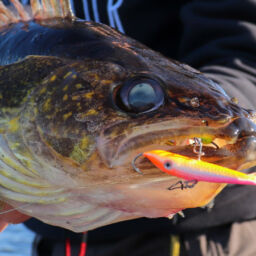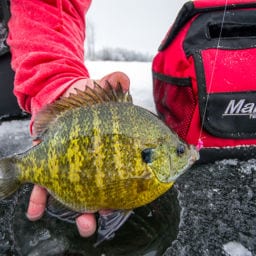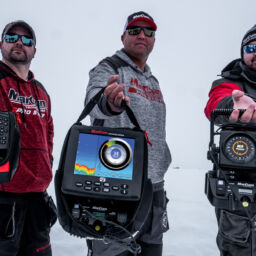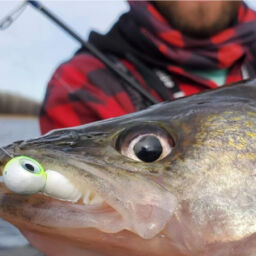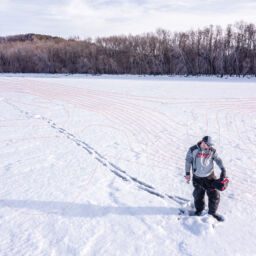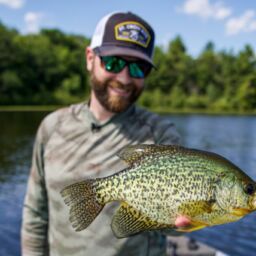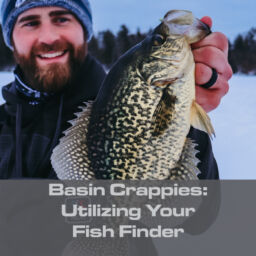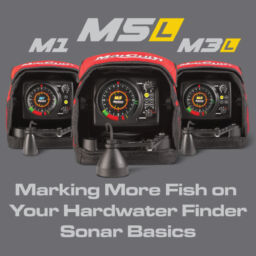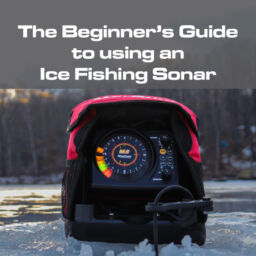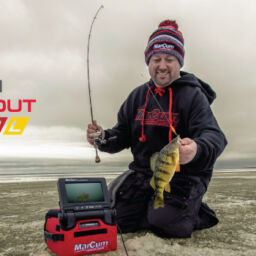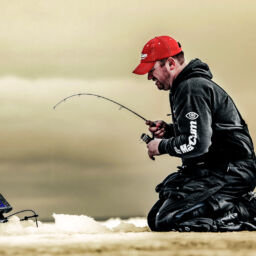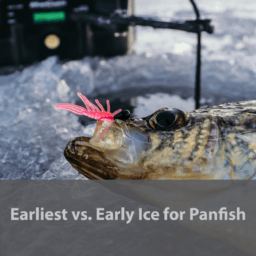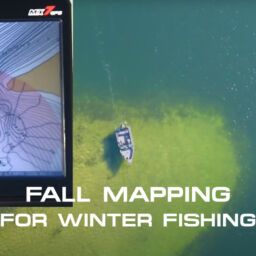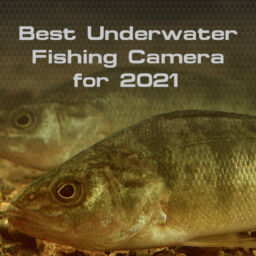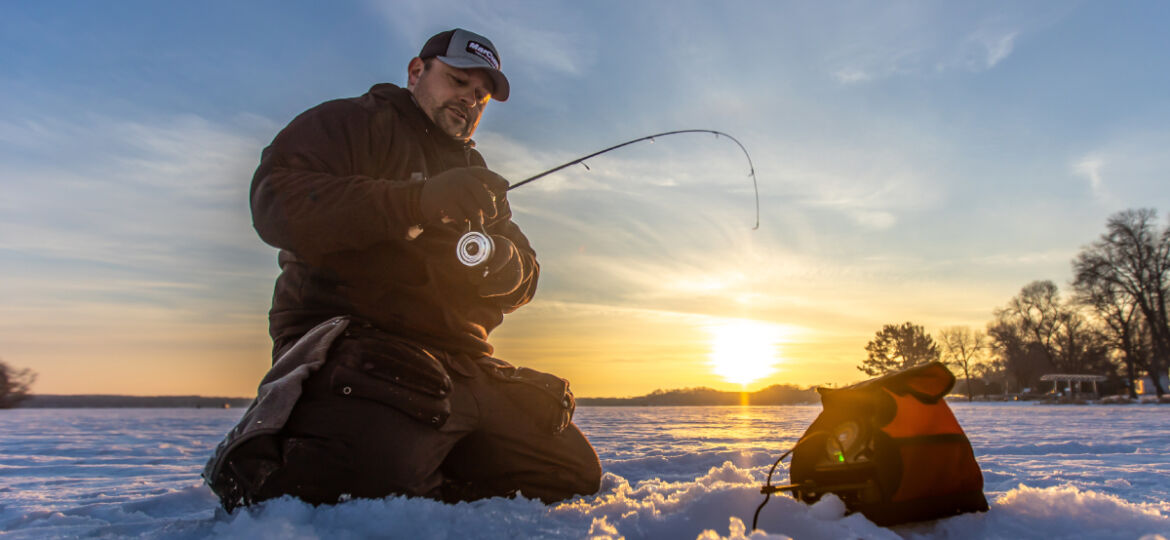
Late Ice Panfish
Tips and Tricks
With gamefish seasons closed at least in my home state, end of ice forays are all about panfish. Whether crappies or bluegill, there’s usually something going by the time March’s sun angle and warmer temps are beating back shoreline ice or at the very least, keeping snow cover down and allowing easy on-lake travel.
However, late ice is a fickle period with weather being the primary driver of conditions and the resulting bite. While it’s probably no surprise by now that the later on hardwater we get, the better the fishing and shallower they may be, here’s a few location tips I’ve learned while chasing late ice panfish.
Basins vs. Shallows
So many times, the breakdown in any lake can be basins vs. shallows. By basins, I mean the deeper holes in your average mesotrophic lake, in the 25-50FOW ranges. Smaller lakes have only one or two, while larger ones can have at least several to many.
Crappies and the shanty-towns that set up over them are typically in transition during late ice, following inside turns and small indentations in contours up to slightly shallower water. Bluegills can be in the same situation, but typically a touch shallower.
By late ice, in lakes with good standing cabbage and coontail weed-growth, you should expect both species to be showing up on the deep edges en masse. Shallow flats with great cabbage can harbor big crappies year round, but they really come out to play towards the very end of the melt off. Biological matter trapped in the ice and terrestrials washing in from shore, along with better light penetration jumpstart the once barren shallow water areas, making them a prime target for the last ice angler.
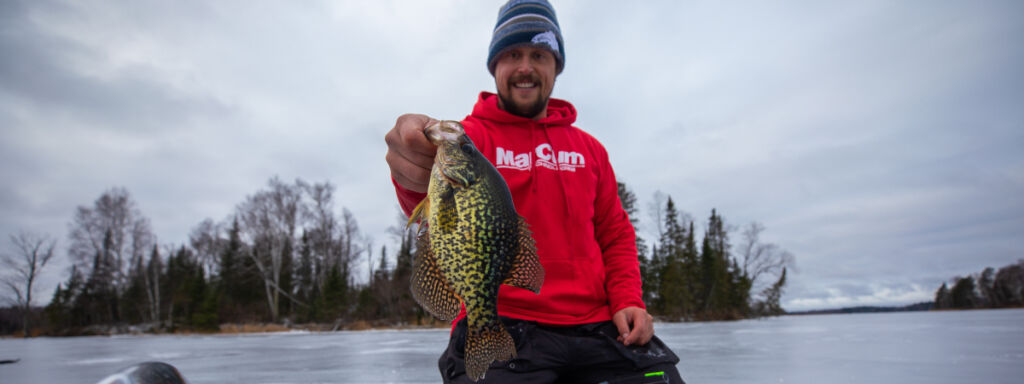
Few Lakes are Created Equal
Variation in location from lake to lake during this time of the year is the exception, rather than the rule. For all but the latest, last-of-the-last, ice-coming-out-underfoot trips, crappie and bluegill locations can be scattered from one lake to the next. Even more troublesome, you can have some lakes with pronounced late ice basin AND shallow water bites.
From experience, I can tell you that typically the shallower bites contain the better quality panfish, but fish there can be more challenging to find AND catch. Basins allow us to use modern sonar to locate fish much more easily, though these can also be challenging as they’ve been chased around in many of the high pressure lakes.
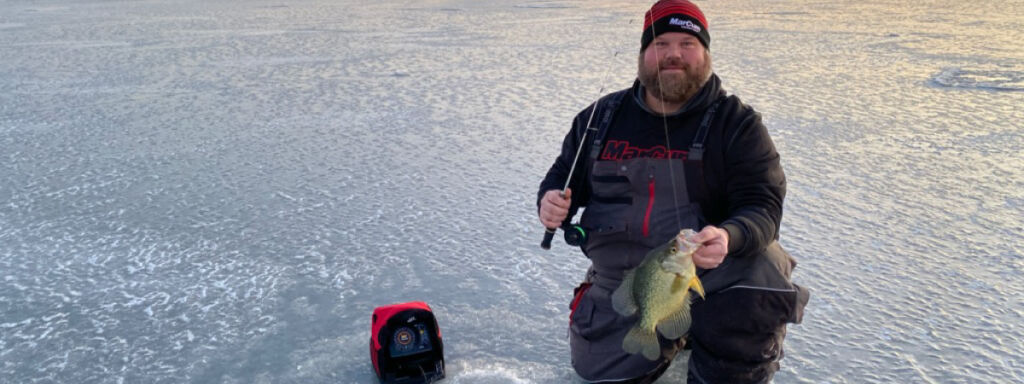
Where to Start?
On all but the latest trips, I start deep before I start shallow. It’s usually easier to approach from a perspective of where you last had them going versus where you hope they may be. A little on-site knowledge from previous seasons, including the spring spawn, comes in handy here. Knowing where crappies and gills spawn, along with their traditional wintering holes sure does make it easier to be somewhere in between come late ice.
Lakes that have great weed growth, full-standing beds or good weeds, or more shallows than basins see a shallow bite sooner. Conversely, as you’d expect, deeper, basin dominated lakes with few weeds see late ice gills and crappies being caught at depth until the bitter end.
Late Ice Safety
I’ve noticed that late-ice means different things to different people. In northern Minnesota, good, late-ice panfishing extends many years into April, and the best of the best is when most people have long hung up their ice fishing gear.
I don’t encourage people to push those limits, but provided you can reach the ice sheet, it’s very common on your average year for ice to depart from the shoreline, yet be very solid once you get out onto the ice proper. Landings and access points can be trashed, but there’s often some really stable ice for up to weeks after it pulls from the shore.
Wear a float suit, bring a friend, and be smart, but watch for the classic signs of ice deterioration. Some people describe it as “honeycombed,” and others can only know it when they see it, but you’ll usually start to feel two types of ice, especially when drilling holes. Clear, hard ice is what you’ve been drilling all season, but the softer, “snow-cone snow” that comes up from an augered hole is tell-tale.
That starts at the top as ice melts, but also can come from the bottom, so be very aware that ice which drills more like snow presents a warning. So does a bunch of water on the ice, and the toilet-bowl flushing that happens in the ice holes you auger.
If holes are expanding due to the drainage, and you’re seeing more snowy ice than the hard, clear stuff, it’s best to work your same path back to shore. Several times I’ve seen open 8” ice holes turn to lake-mines a few feet in diameter by the end of a warm March or April day.
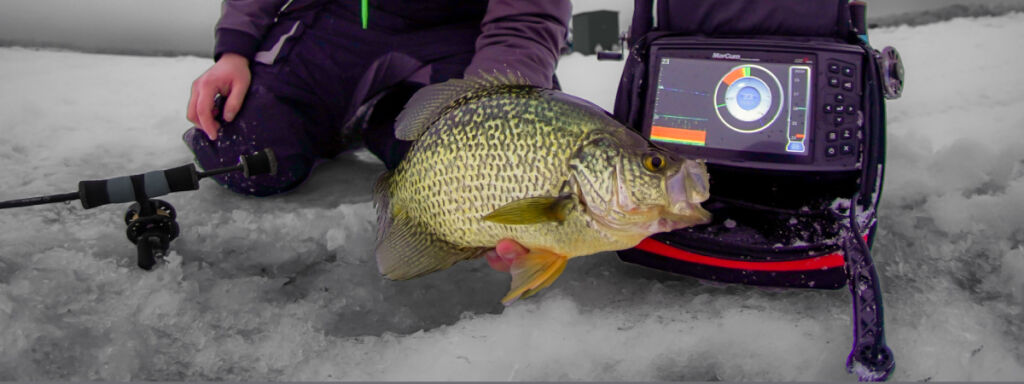
Weather Dependence
Few ice bites are driven by weather like the late ice fishing period. March can be more like February, March, or May for that matter. Take stock of previous days weather, as that can make as much difference as anything. I’ve learned over the years that fish don’t like abrupt changes, and I’d rather fish the back end of a gradual warming trend than the front of it for sure.
Similarly, cold weather is fine, but you should be looking for those fish in midwinter locations as well. A sudden onset of cold during the warming trend has been some really tough fishing for me in the past, so if you can pick your days, aim for the latter half of March in most of MN, and fish towards the back half of warming patterns.
The thaw, refreeze, thaw pattern becomes familiar to fish and they learn to key in on progressively shallower routines. They also seem to be more cooperative in general then.
The Predator Factor
Predators will be active then too, and when shallow, pay mind to the fact that these fish are likely being chased around in healthy systems. Being tight up against, or inside a weedbed may be the only way to get bit, as predators patrol the perimeter. It can be a game of inches, or at least feet when settling on late ice locations, so drill plenty of holes, use a camera, and observe.
Big, active shallow bass have typically meant quality gills aren’t far behind. The same can be said for crappies and pike from my experience. Learn to deal with them rather than lament them, as part of the process and reason you’re likely to find some success in those areas.
Late ice is a great time to fish, though I don’t blame you if spring is heavy on the brain. That said, knowing where winter fish last end up is the first step to finding them again in the boat, so call it a scouting trip if nothing else. You just might find yourself fishing more late ice than you did during the rest of the winter.


